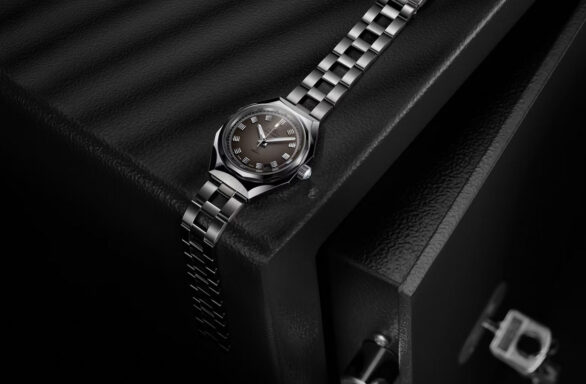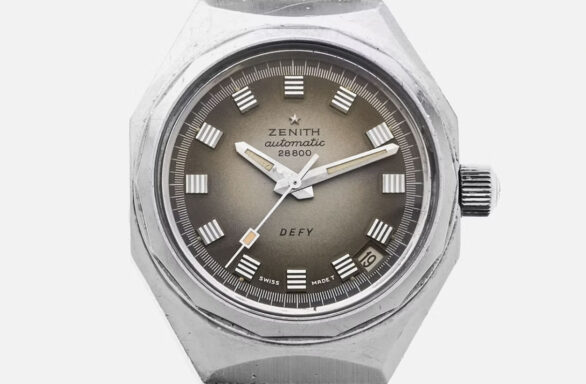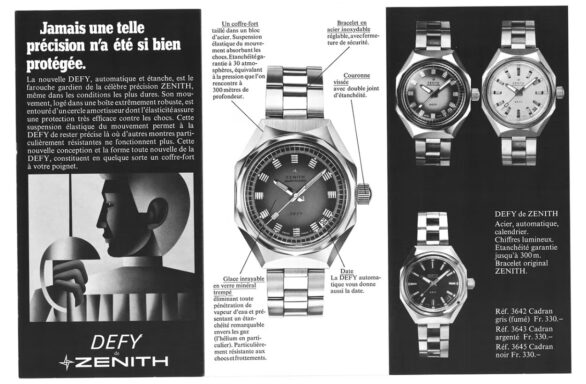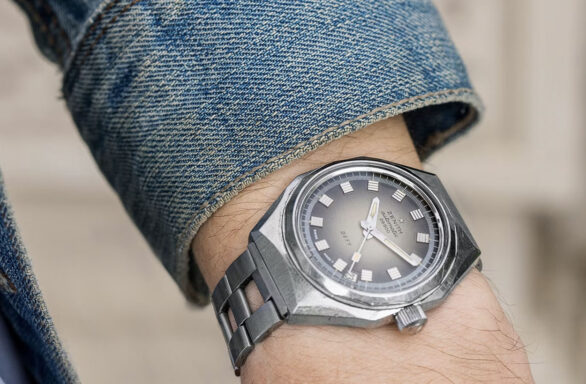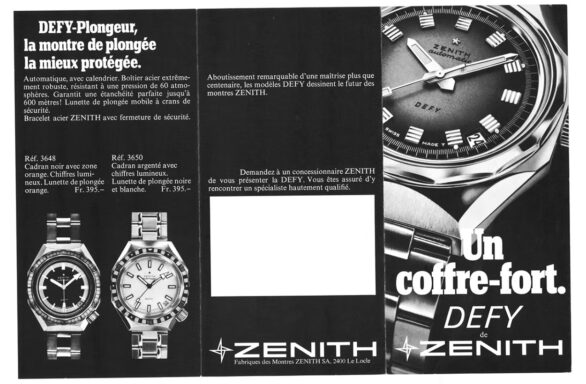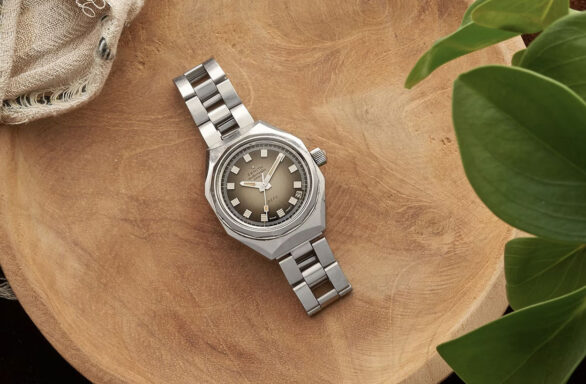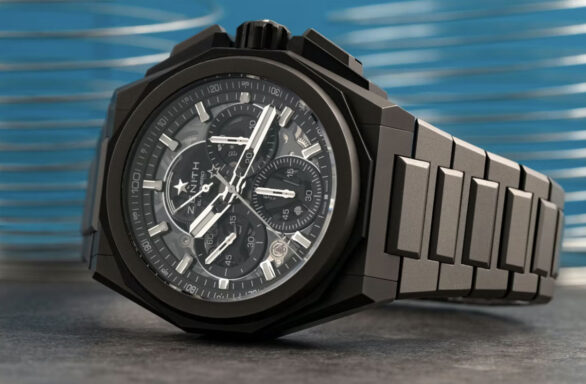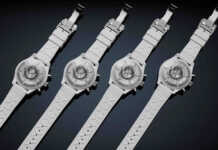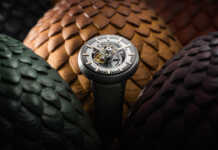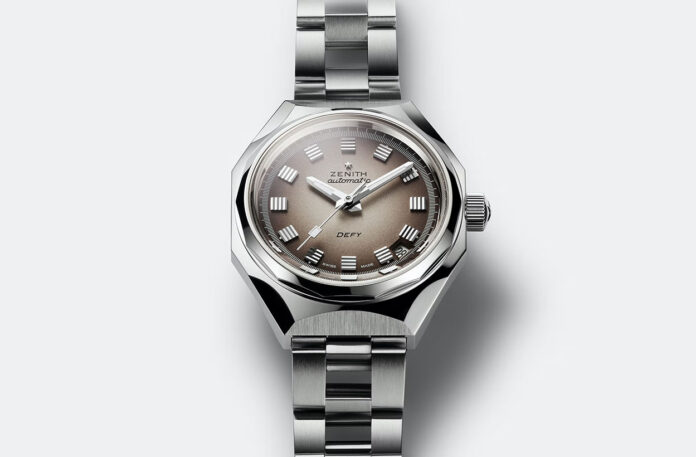
The contemporary Zenith Defy collection, in its current form since 2017, looks like a watch that was designed to meet the trends of the 2020s. The connection between the bracelet and strap has an integrated aesthetic; the bezel profile and case design prioritize hard angles and flat surfaces, and the dials have a maximalist tendency toward skeletonization. Each Defy update since its official return five years ago has reflected the larger demand for daily-wear sport watches.
However, the Defy also has a rich history at Zenith, a past that’s been skipped over time and time again by today’s watch lovers. After Zenith’s significant investment in expanding the Defy and making it central to the brand’s vision for future growth, the Swiss company has decided to give one of the original 1969 Defy wristwatches the special “Revival” treatment. This comes after several successful Revival releases in the El Primero-powered Chronomaster series, and hopefully it’s a sign of even more heritage-focused watches to come from Zenith. The Zenith Defy Revival A3642, a limited edition of 250 watches, is priced at $7,000 and runs on the in-house Elite 670 caliber with central seconds.
The Defy can be traced back to the beginning of the 20th century. That’s when Zenith founder Georges Favre-Jacot registered a trademark for and began production on a new series of pocket watches labeled with the French word défi – challenge, in English – on the dial.
At this point in the history of Swiss watchmaking, Zenith was one of the first brands to prioritize vertical integration and bring nearly all aspects of the watchmaking process under a single roof. Doing anything new is always a risk, of course, and Favre-Jacot is said to have faced considerable resistance from the old guard in Zenith’s hometown of Le Locle. But Favre-Jacot’s new way of working was quickly validated thanks to the high quality of the Défi pocket watches and the renown they achieved across Switzerland.
These early examples of the Défi solidified Zenith’s reputation as a producer of sturdy and accurate timepieces. Zenith continued production of the pocket watches until the late 1960s rolled around, when the Défi name was subsequently anglicized (Defy) and transitioned over to a new family of wristwatches whose angular cases resemble those used in today’s Defy collection.
It’s this period – 1969, the same year Zenith’s El Primero was released – that the original A3642 was revealed as one of the inaugural Defy wristwatches. These watches had a singular goal: to achieve a higher standard of durability than was typical of the Swiss watch industry at the time. It was achieved through a series of substantial technical improvements, including 300 meters of water resistance and the adoption of a tougher mineral crystal, which promised to be more scratch-resistant than plexiglass. Zenith was one of the first Swiss watch companies to make those upgrades.
“The Defy is linked to the definition of a modern person,” says Laurence Bodenmann, Heritage Manager for Zenith. “A modern person is always on the move. So this type of person would need an El Primero chronograph, to be precise and to measure time, and they would also need to have a watch that would defy the elements and be more waterproof. That’s Defy.”
Certain Defy watches went so far as to pioneer a higher level of resistance to magnetism; you can find those printed with the “Defy Gauss” label on the dial. What was standard on all of these early Defy examples, however, was a unique suspension system, in which the movement inside the watch was grounded by an elastic, shock-absorbing band to provide nearly unprecedented impact protection.
In Greg Selch’s Talking Watches – where he describes his vintage Defy as his “desert island watch” – he tells Cole a story of how Zenith employees would test the shock resistance of the first Defy prototypes by tossing them out of a second-story window at the Le Locle-based manufacturer and onto the concrete below (a process that would famously be repeated at G-Shock, 15 years or so later). When I asked Zenith about these early trials, I half-expected a much more boring story to emerge but that wasn’t the case – Zenith’s employees wanted to confirm that the suspension system would protect the movement from the impact generated by a two-story fall onto concrete.
“Zenith was well-known for precision at this time; they were the champion of many different chronometry competitions,” Bodenmann says. “Those chronometers were always framed in classic cases, in gold cases. They didn’t talk about the resistance of the watch at all. But the Defy was for the everyday person – male or female, the Defy existed for both – who just wanted to live with a watch on an everyday basis.”






